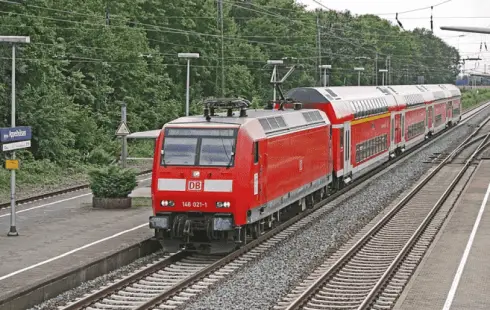
Crypto Investment Entry and Exit Strategies of Institutional Investors
Section: Business
 Following the fatal train accident in Garmisch-Patenkirchen at the beginning of June, Deutsche Bahn announced that 200,000 concrete sleepers throughout the rail network would have to be checked for weak points.
Following the fatal train accident in Garmisch-Patenkirchen at the beginning of June, Deutsche Bahn announced that 200,000 concrete sleepers throughout the rail network would have to be checked for weak points.
The concrete sleepers examined were of the same type as those on the section of track used by the train involved in the accident, it said at the time. According to DB, this corresponds to about 0.25 percent of all concrete sleepers in the network.
On average, the components are 15 years old. If "recognizable changes on the surface" were discovered, the sleepers would be replaced. The work could lead to detour or delays, the company said after the accident.
In the meantime, the suspicion of a defect in the components in question has been substantiated. "Initial preliminary findings from technical reports by independent testing institutes now suggest that there is a manufacturer's defect," the railroad announced on Friday. "In some cases, the sleepers show irregularities in the material composition."
Already, the impact on rail traffic is immense. The "Süddeutsche Zeitung" has a more detailed list of the affected sections of track. According to this, the railroads had to completely close 47 sections nationwide in August, and the speed had to be reduced on 118 other passages.
On the affected sections of track, if they are not closed, the trains are usually only allowed to travel half as fast as usual. According to the report, there are dilapidated sections in almost all German states.
The reason for the damage to the concrete sleepers is apparently chemical reactions that cause the otherwise hard concrete to become brittle, writes the SZ with reference to experts. The railroad, it says, hopes to be able to replace most of the affected sleepers by the end of the year.
Image by Erich Westendarp

Section: Business

Section: Arts

Section: Arts

Section: Business

Section: Business

Section: Arts

Section: Health

Section: Arts

Section: News

Section: News
Health Insurance in Germany is compulsory and sometimes complicated, not to mention expensive. As an expat, you are required to navigate this landscape within weeks of arriving, so check our FAQ on PKV. For our guide on resources and access to agents who can give you a competitive quote, try our PKV Cost comparison tool.
Germany is famous for its medical expertise and extensive number of hospitals and clinics. See this comprehensive directory of hospitals and clinics across the country, complete with links to their websites, addresses, contact info, and specializations/services.
One of the most beautiful squares transforms into a summer stage every year for two days. The Gärtnerplatz Open-Air features a free music and cultural program across three stages, as well as street food from local vendors. On Saturday, the main stage at Gärtnerplatz offers something for everyone,...



No comments yet. Be the first to comment!